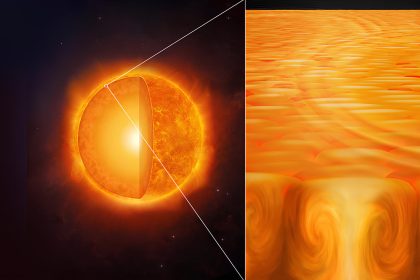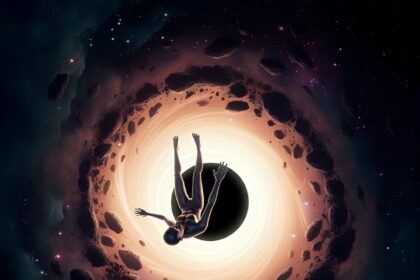It is hard to argue that the sun is incredibly beneficial. It gives us light and warmth, keeps water in a liquid state, and helps plants photosynthesize. It would be extremely sad if something happened to our star—for example, if it turned into a black hole.
Strictly speaking, in reality, the sun cannot become a black hole because it is not heavy enough. For example, the mass of the smallest known black holes is between 3.66 and 4.97 times the mass of our star. Theoretically, smaller black holes could exist, weighing just about 2.7 times the mass of the Sun. However, astronomers have yet to observe them through their radio telescopes.
In other words, the sun would need to be at least 2.7 times heavier to turn into a black hole. And even then, it’s not guaranteed that it would succeed.
However, not only have we imagined the Sun turning into a black hole, but we have also lost it altogether, flown through Jupiter, and experimented on the Moon—so why not try new experiments?
So, let’s imagine the star suddenly turns into a black hole of equivalent mass—how would this affect our lives?
Well, for the first 8 minutes, or more precisely, 499 seconds, we wouldn’t notice anything because light takes time to reach Earth. After that, the sun would simply disappear, and eternal night would fall—only distant stars would illuminate the sky. They would be visible 24 hours a day, which, you have to admit, would significantly simplify astronomical observations.
Perhaps you imagine a beautiful, massive black hole appearing in the sky, like Gargantua from Interstellar or Sagittarius A* at the center of our galaxy, which was photographed by astronomers from the European Southern Observatory in 2022.
But no. Those are supermassive objects surrounded by large accretion disks of matter falling into them. A black hole formed from the sun would have a radius of only 3 kilometers. You wouldn’t even be able to see it through a telescope.
Moreover, our new system’s black hole wouldn’t have any material to absorb and form an accretion disk—there are no nearby stars or nebulas to consume. As a result, the hole would be dark, unnoticeable, and lacking the beautiful orange special effects.
But don’t worry; this transformation has many advantages.
The Earth and all other planets would continue to orbit around our black hole just as they do now. Since its mass remains unchanged, the gravitational influence would stay the same.
Black holes are stable and last for a very long time. In theory, they slowly lose mass and disappear—this is called Hawking radiation. But this process is slow, and we would no longer need to fear that in 3 billion years, the Sun will boil the oceans, or in 5 billion years, it will turn into a red giant and engulf the Earth.
Specialists from McGill University in Montreal calculated the evaporation time for a black hole with the mass of the Sun due to Hawking radiation—10⁶⁷ years. And as you can see, this is far longer than the current age of the universe.
So, our new system would continue to revolve for an incredibly long time, and the planets wouldn’t collide with one another.
However, there are some minor drawbacks to this scenario. Due to the lack of sunlight, civilization would need to move underground, closer to the core, build highly efficient nuclear reactors, and melt drinking water using artificial heating. This technological challenge would give an unprecedented boost to scientific development.
Or we could all just freeze and die.






